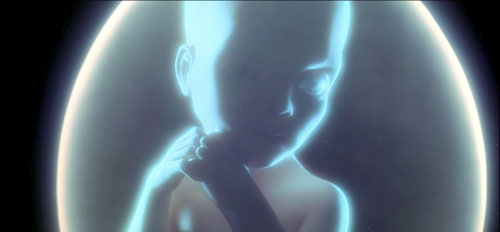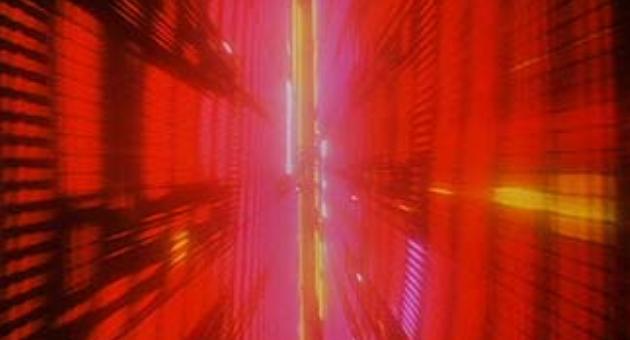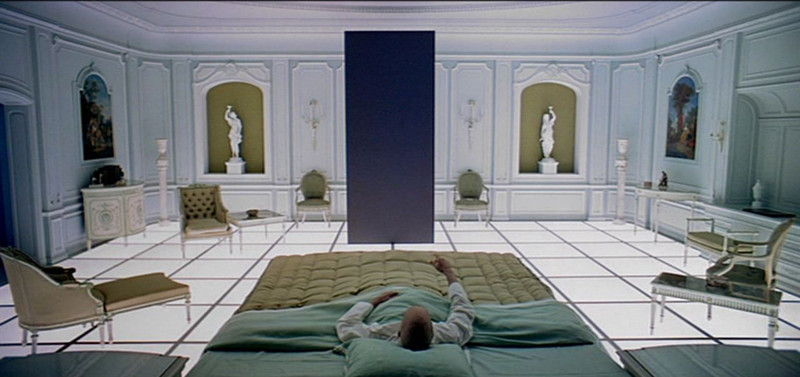The great thing about art is how it can be interpreted in different ways. There’s nothing better than looking at a piece of art such as a painting or novel and walking away with something in mind about what it means to you. Each person sees art in different ways. Some may like it and some may not. Either way, though, art can be interpreted in a large number of ways.
Filmmaking is no different. Stanley Kubrick wasn’t just a movie director. He was an artist. He was one of the few filmmakers who successfully managed to garner an audience of both the general public and the film lovers. His masterpiece “2001: A Space Odyssey” is a prime example of this.
While it did take some time to become the classic it is today, there’s no doubt that upon the film’s release that it was something different. It doesn’t have a coherent plot that goes from beginning to end. Rather, it’s a film to be experienced and like all great art, it can be interpreted in so many different ways. It carries with it many visual motifs throughout from the monolith to the famous final image of the fetus. Here, we count down the 5 different ways the film can be interpreted. This list is in no particular order.
5. A Cautionary Tale About Technology
This is perhaps the most obvious way it can be seen, but it truly sticks out. In the beginning of the film we’re introduced to The Dawn of Man, the apes fend for themselves and use little to nothing to get a task accomplished. The only pieces of “technology” used are their own strength and bones. These are early signs of man creating and discovering ways of accomplishing a task with technology as an aide.
Whereas, when we go to the Jupiter Mission, everything is controlled by a piece of machinery from video phones to, of course, HAL 9000. Later on in the film, HAL starts to dominant our main characters to the point of killing crew members. Today, we have devices like laptops and iPhones where almost can be done with the push of a button or voice command, much like in the movie.
How far will artificial intelligence come in years to come though? Will machines replace us? Is our freedom of speech and privacy being threatened by technology? These are some of the questions the film raises and, in a way, warns us about what could happen.
4. Evolution Is Continuous
From the Dawn of Man to Jupiter and Beyond Infinite, the movie displays a heavy theme of evolution and how far we’ve come as human beings and how we continue to evolve. We started out as a simple race of beings trying to understand life and what our purpose is. Then, eventually trying to understand it further as humans. We continue to do so today.
The fetus tells us a lot on how evolution continues from, not just the beginning of time, but also when a life is born. We evolve from toddler to adult and when a new life comes into the world, it starts again and again. It’s a life cycle, much like reincarnation, which leads me to my next point.
3. Religion
Much of the imagery has religious tones to them. For example, the apes look upon the monolith as if its God like. The way the apes touch and feel it has resemblance to folks who pray to the crucifix in church. It shows that kind of power.
There’s one particular moment in this part of the story that stood out as well. During the famous scene of the Ape smashing the bones, the film cuts to a low angle shot of the monolith that we just saw. It’s at that moment that the ape has the motivation to smash the bones. The way it plays out is as if God has given the creature its strength and evolve into another type of being.
Also, throughout the Jupiter mission, the personnel at Clavius want to find this artifact that was buried four million years ago, much like how still to this day there are people looking for religious artifacts.
Plus, as mentioned, the whole idea of being born again and continuing the circle of evolution is prominent especially at the end. The monolith appears at the foot of the bed of an older Dave and then we see the fetus. It has resemblance of God taking one’s soul into the next life. Though, what is the next life? This is a question that’s left for the audience to decide.
2. Time
Time plays an extremely pivotal role in the film. It revolves around time from the beginning to the end. One moment where it’s prominent is during the star gate sequence. Dave literally travels at the speed of light through the star gate and quickly it is revealed that time has sped up when Dave encounters an older version of himself. The monolith, in this situation, could represent a change in time.
Notice how the monolith is always the breaking point at the end of each “segment” of the film. When the apes see it, we are soon taken to the Jupiter Mission and then at the end of that we are taken to Jupiter and Beyond Infinite. Each scene when the monolith appears is a progression of the story.
One could even argue that the apes are also the human beings we see in the film. Perhaps the monolith could be a use for time travel and thereby the beings evolve to the next level of life.
1. Sex
This is a rather subtle element. The monolith can be seen as a dominant female figure. Again, as soon as the monolith appears in the film, we cut to another time and place in the story. When the apes see it, they, not only look at in a God like fashion, but it could also be seen as a young boy discovering the female form for the first time. It stands tall among the creatures.
Later on during the mission, the crew members discover it and are about to take a picture with it when it starts making a deafening noise. It’s as if they’re being scolded for invading its privacy. The ultimate proof of this concept would be when it appears again at the end of the picture.
Dave finally sees monolith for the first time at the foot of his bed and we then see the fetus. The monolith has conceived a new life. Thereby, we could assume that the point of the film was the discovery of life and it begins with the idea of creation.
Author Bio: Chris Esper is a director based out of Attleboro, MA. When he was in his teens, he received his first camera and started experimenting with it. After high school, he attended New England Institute of Technology in East Greenwich, RI where he received his Bachelor’s Degree in Digital Recording Arts. With several projects under his belt and more on the horizon including, Chris continues to work closer to his dreams.





